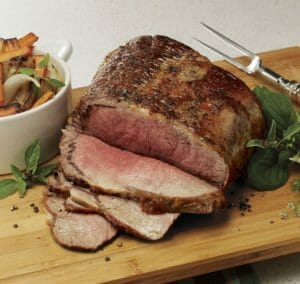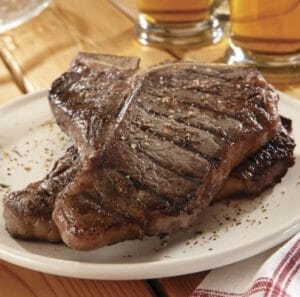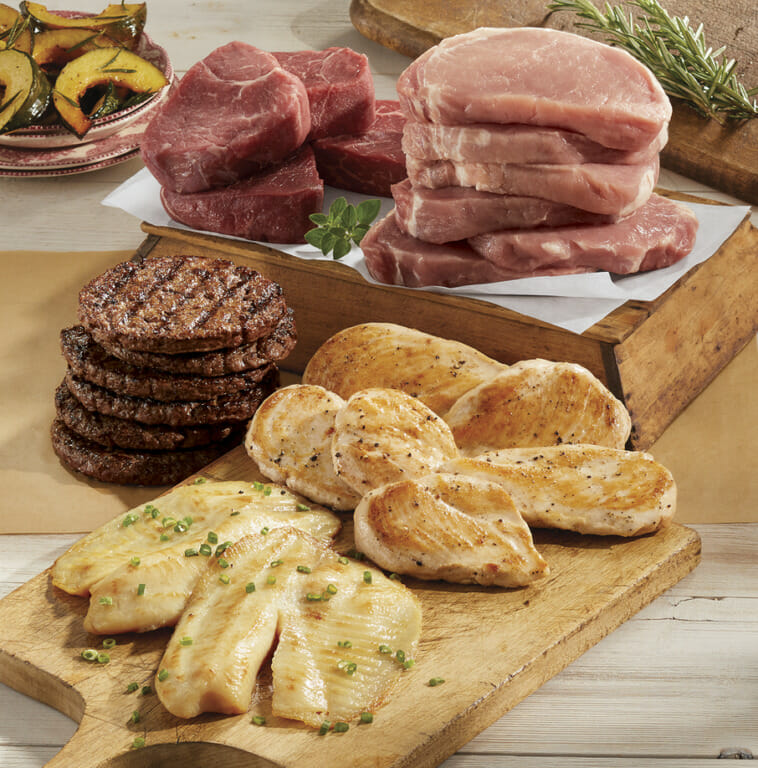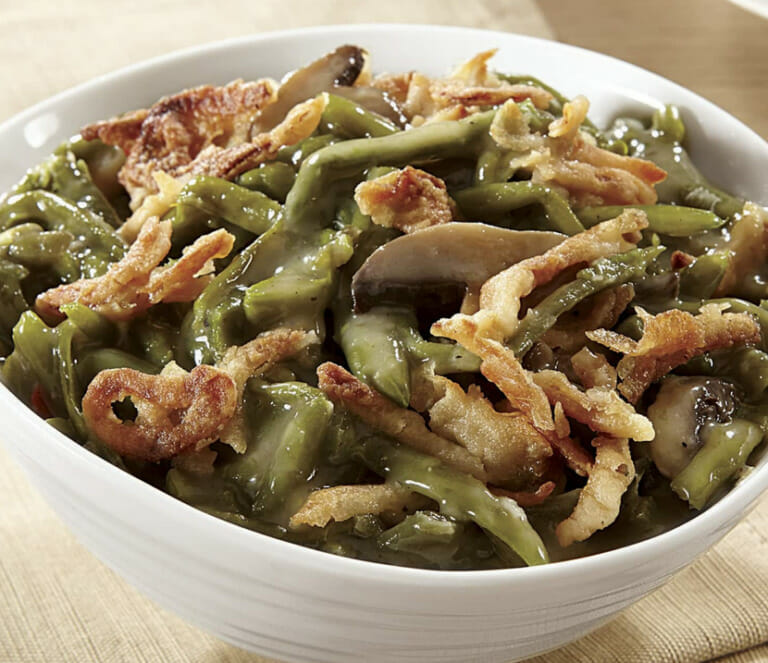Easy Irish Recipes for St. Patrick’s Day
Corned beef and cabbage is not really an Irish food tradition, and we have better alternatives for St. Patrick’s Day. “Go green” in style with easy Irish recipes!

Irish Food Traditions (and Myths)
As the old saying goes, “Everybody’s Irish on St. Patrick’s Day.” Many of us wear green that day, and might stop by our favorite bar or restaurant for a hearty order of corned beef and cabbage washed down with a green beer. But what many people don’t know is that—while they’re doing Erin proud with the “wearin’ o’ the green”—what they’re eating and drinking is not particularly Irish.
St. Patrick’s Day, or the Feast of St. Patrick, is a national holiday in the Republic of Ireland and in Northern Ireland of the U.K. Celebrated by people of Irish descent worldwide, it is held on March 17, the anniversary of the death of Saint Patrick, the patron saint of Ireland.
Patrick was a 5th-century English missionary and priest who, tradition has it, converted the Celtic pagans of Ireland to Christianity. This eventually morphed into a legend in which he drove all the snakes out of Ireland (even though Ireland has never had snakes). Because Patrick supposedly used the three-leafed shamrock to symbolize the Holy Trinity to the Irish, this became an icon of the holiday; Patrick is typically depicted as holding a shamrock.
Shamrocks, of course, are green, as is most everything on “Paddy’s Day”. (Note: It’s “Paddy”, not “Patty”. Paddy is short for Padraig, the Irish spelling of Patrick. Patty is a woman’s name, short for Patricia.) Green was the color of the Irish Catholic Confederation and is one of the three colors of the Irish flag; the opposite color is orange, representing the Protestants; and the white band in the middle signifies the desire for peace between the two…which hasn’t always worked out so well. In fact, there are always a few contrarians who insist on wearing orange on this day, but it’s more fun and friendly to go with the flow.
So now that you’ve broken out the green sweater, what are you going to eat in honor of St. Patrick? Ah, that quintessentially traditional Irish recipe, corned beef and cabbage. On second thought, not so fast…
Is Corned Beef and Cabbage Irish?
Not really…so what is it? Although you will often see people refer to “corn beef and cabbage”, this is in error; corned beef has nothing to do with corn. Why is it called corned beef? “Corning” is a method of preserving meat in salt brine…and it doesn’t have to be beef. (Corned pork, for example, is very popular in Scandinavian countries.) It got its name because the rock salt used in the process was about the size of a grain of barley, or barleycorn.
The most popular cut of beef for corning is the brisket, which comes from the chest. Because it is a tougher cut, it must be cooked slowly; barbecuing in a smoker is a favorite method, and it is often served as a pot roast in traditional Jewish cuisine. But while Ireland was a major producer of beef under British rule, it was mostly exported and used by the wealthy British landlords; the poor Irish tenant farmers couldn’t afford beef and turned more to potatoes. Most meat eaten was more likely to be pork, and hardy vegetables like cabbage, kale and turnips would round out the traditional Irish meal. A very popular meal was bacon and cabbage.
So how did corned beef and cabbage come to be considered an Irish food tradition? It originated, as have many culinary traditions, in the American melting pot.
Irish immigrants to major Eastern cities like Boston and New York often lived in the poorer neighborhoods alongside other immigrants like Italians and Jews. The Jewish lunch carts and delis would sell corned beef and its spicier cousin, pastrami, and Irish Americans found that corned beef was an acceptable alternative for the cured Irish bacon they enjoyed back home. Cooking it together with plenty of cabbage and other vegetables resulted in an easy dinner that was inexpensive, filling, and difficult to overcook. It quickly became an Irish American staple and the most popular of St. Patrick’s Day dinner recipes. But if you want real traditional Irish recipes, there are better choices.
Easy Traditional Irish Recipes
One classic Irish food tradition is a fork-tender beef stew scented with thyme…especially with fresh-baked Irish soda bread to sop up the gravy. Or if you want to go a bit more upscale with your entrée, lamb has always been a popular choice in Ireland. Opt for a classic leg of lamb roast, or elegant and super-easy lamb shanks. When your entrée is already done for you, cook up an easy and traditional Irish side dish.
Colcannon is a popular side dish consisting of kale (or cabbage) and potatoes flavored with alliums like onions, leeks or green onions, and enriched with milk and butter. A similar dish called champ omits the kale or cabbage and uses lots of scallions, and often scandalous amounts of butter.
Drink Like an Irishman
Yes, everything is green on St. Patrick’s Day…including the beer, if you were to visit one of many American bars on March 17. In Ireland, this is simply not done. If you’re offered a plastic cup of tap light beer tinted with green food coloring, politely decline, back away and find yourself an Irish pub for a proper pint. Luckily, you won’t have to contend with this when dining at home, where you can select the perfect beverage to go with your Irish food.
If you really want to drink Irish, the quaff of choice is Guinness Stout or another real Irish beer: other stouts include Murphy’s and Beamish, and there are excellent ales (such as Smithwick’s) and lagers (such as Harp, which is made by Guinness).
One popular drink is the Half and Half: a seemingly impossible layered beer made by filling a pint glass half-full of a pale ale or lager, then pouring dark Guinness Stout slowly over an inverted tablespoon (Guinness supplies special spoons for bars serving them) so that the dark layer floats atop the light layer. In America, this is generally known as a Black and Tan, and many pubs use Bass Ale as the lighter half. This is blasphemy to a real Irishman in two ways: First, Bass Ale is English, and has no place in an Irish pint on Paddy’s Day. Second, “Black and Tans” was the nickname of the Royal Irish Constabulary Special Reserve, a mercenary police force recruited by the British government after World War I to suppress the rebellion in Ireland. Ordering a “Black and Tan” in Ireland will get you tossed from many a pub. So, in true Irish spirit, make it with Harp Lager and call it a Half and Half…or just have a Guinness. It goes well with anything Irish.
Ireland is generally not associated with wine—the climate is not conducive to growing grapes—but the Irish have been consuming more and more wine over the past 25 years. The most popular wines in Ireland come from Australia, France, Chile and South Africa. Shiraz (Syrah) is the favorite red, while chardonnay and sauvignon blanc are the preferred whites. Shiraz is the perfect choice if you’re enjoying lamb or beef stew…that is, if you really must have wine with your traditional Irish dinner. So eat hearty, and…
Beannachtam na Feile Padraig (Happy St. Patrick’s Day)!



